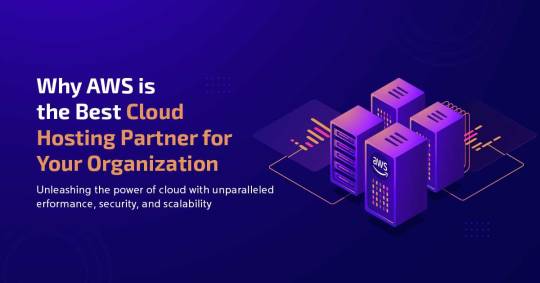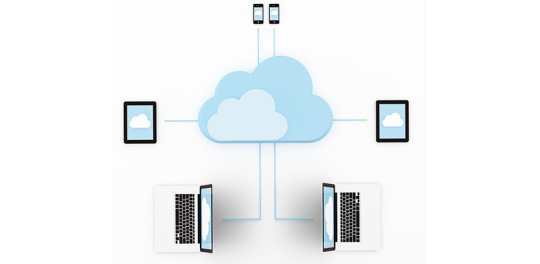#platform as a service in cloud computing examples
Explore tagged Tumblr posts
Text
How Leading Companies Are Leveraging Infrastructure as a Service (IaaS)
As businesses increasingly turn to digital solutions, Infrastructure as a Service (IaaS) has emerged as a vital component for modern enterprises. By utilizing cloud platforms, companies can enhance their agility, scalability, and cost-efficiency. This article explores infrastructure as a service examples and how leading companies are leveraging IaaS providers to drive innovation and growth.
What is Infrastructure as a Service (IaaS)?
IaaS is a cloud computing service model that delivers virtualized computing resources over the internet. It enables businesses to rent infrastructure components like servers, storage, and networking, rather than investing in physical hardware. This flexibility allows companies to scale resources according to their needs and focus on core activities without the burden of managing IT infrastructure.
1. Netflix: Enhancing Scalability and Performance
Cloud Infrastructure Examples
Netflix, the global streaming giant, leverages IaaS to manage its vast content library and ensure seamless streaming experiences for millions of users worldwide. By using IaaS providers like Amazon Web Services (AWS), Netflix can quickly scale its infrastructure to handle peak loads, such as new releases or seasonal spikes in viewership. This scalability ensures high performance and availability, crucial for maintaining customer satisfaction.
2. Airbnb: Optimizing Resource Management
IaaS Use Cases
Airbnb, the popular online marketplace for lodging, utilizes IaaS to manage its global operations. The company employs cloud services examples like dynamic scaling to match infrastructure resources with fluctuating demand. During peak travel seasons or significant events, Airbnb can scale up its infrastructure to accommodate increased traffic, ensuring reliable service and user experience.
3. Slack: Ensuring Data Security and Compliance
Cloud Platforms
Slack, a leading collaboration platform, relies on IaaS for data security and regulatory compliance. By partnering with IaaS providers like Google Cloud Platform (GCP), Slack benefits from advanced security features, including encryption and compliance with industry standards such as GDPR and HIPAA. This ensures that sensitive business communications remain secure and compliant with regulations.
4. Pinterest: Enhancing Development and Innovation
IaaS Providers
Pinterest, a visual discovery and bookmarking platform, leverages IaaS to accelerate development cycles and foster innovation. Using cloud platforms like Microsoft Azure, Pinterest provides its developers with the tools and resources needed to build, test, and deploy new features rapidly. This agile development environment supports continuous improvement and innovation.
5. Spotify: Delivering Seamless Music Streaming
Cloud Infrastructure Examples
Spotify, the music streaming service, utilizes IaaS to manage its extensive music catalog and deliver high-quality streaming experiences. By using cloud platforms like Google Cloud, Spotify ensures that users can access their favorite music anytime, anywhere. The scalable infrastructure allows Spotify to handle millions of concurrent users without compromising performance.
6. Coca-Cola: Supporting Global Operations
IaaS Use Cases
Coca-Cola, a global beverage leader, uses IaaS to support its worldwide operations. By partnering with IaaS providers like IBM Cloud, Coca-Cola manages its supply chain, customer data, and digital marketing initiatives across different regions. This integrated approach enables Coca-Cola to maintain consistency and efficiency in its global operations.
7. Twitter: Managing Real-Time Data
Cloud Services Examples
Twitter, the social media platform, leverages IaaS to manage and process vast amounts of real-time data. Using cloud platforms like AWS, Twitter can handle high volumes of tweets, mentions, and user interactions with minimal latency. This capability is crucial for delivering real-time updates and maintaining user engagement.
8. General Electric: Facilitating Industrial IoT
IaaS Providers
General Electric (GE) uses IaaS to power its Industrial Internet of Things (IIoT) initiatives. By utilizing cloud platforms like Microsoft Azure, GE connects industrial equipment and collects data to optimize performance and predict maintenance needs. This data-driven approach enhances operational efficiency and reduces downtime.
9. eBay: Ensuring High Availability
Cloud Infrastructure Examples
eBay, the e-commerce giant, employs IaaS to ensure high availability and reliability for its global marketplace. By using IaaS providers like AWS, eBay can quickly scale its infrastructure to handle large volumes of transactions and user interactions. This reliability is essential for maintaining trust and satisfaction among buyers and sellers.
10. Zoom: Supporting Remote Communication
IaaS Use Cases
Zoom, the video conferencing service, relies on IaaS to support its global user base. By leveraging cloud platforms like Oracle Cloud, Zoom ensures high-quality video and audio communication, even during peak usage times. This scalability and reliability are critical for supporting remote work and virtual events.
Conclusion
Leading companies across various industries are leveraging Infrastructure as a Service (IaaS) to enhance scalability, performance, security, and innovation. By partnering with top IaaS providers and utilizing cloud infrastructure services, these businesses can stay agile, competitive, and responsive to market demands. Whether it's optimizing resource management, ensuring data security, or supporting global operations, IaaS provides the flexibility and power needed to drive business success in the digital age.
#aws web services#saas#aws amazon web services#data centres#iaas infrastructure as a service#aws cloud computing#azure cloud#saas services#platform as a service examples#saas cloud#IT infrastructure as a service#iaas as a service#infrastructure as a service examples#information technology IT infrastructure#IT and infrastructure#aws global infrastructure#azure services#platform as a service#infrastructure as a cloud#IT infra service#data center and cloud computing#cloud based data centers#aws infrastructure#aws datacenter#azure cloud services#amazon web services in cloud computing#platform as a service in cloud computing examples#digital infrastructure#microsoft azure cloud#aws connect
1 note
·
View note
Text
Enhancing Customer Experience with Cloud Solutions
In today’s competitive business landscape, enhancing customer experience is paramount. Cloud solutions have emerged as a pivotal technology in this arena, offering numerous benefits that help businesses improve customer satisfaction, streamline operations, and drive growth. This blog explores how leveraging cloud solutions can transform customer experience, making it more personalized, efficient, and responsive.

Personalized Customer Interactions
Cloud solutions enable businesses to gather and analyze vast amounts of customer data, providing insights that can be used to personalize interactions. By leveraging cloud-based CRM (Customer Relationship Management) systems, companies can track customer preferences, purchase history, and behavior patterns. This data-driven approach allows for tailored recommendations and personalized communication, enhancing the overall customer experience.
Example : E-commerce platforms use cloud-based analytics to suggest products based on a customer’s browsing and purchase history, creating a personalized shopping experience.
Improved Accessibility and Convenience
Cloud solutions offer enhanced accessibility, allowing customers to interact with businesses anytime, anywhere. Whether through cloud-based mobile apps or responsive web platforms, customers can access services and support at their convenience. This round-the-clock availability significantly improves customer satisfaction and loyalty.
Faster Response Times and Better Support
With cloud solutions, businesses can improve their response times and offer better support to their customers. Cloud-based customer service platforms enable support teams to access customer information quickly, collaborate in real-time, and resolve issues efficiently. Additionally, the use of AI-powered chatbots and virtual assistants, hosted on the cloud, ensures that customers receive instant responses to their queries.
Example: Telecommunications companies use cloud-based customer service platforms to manage support tickets and provide quick resolutions, reducing wait times and enhancing customer satisfaction.
Enhanced Collaboration and Communication
Cloud solutions facilitate better collaboration and communication both within the business and with customers. By using cloud-based collaboration tools, teams can work together seamlessly, share information, and coordinate efforts to improve customer service. This collaborative approach ensures that customer issues are addressed promptly and effectively.
Example: Healthcare providers use cloud-based platforms to share patient information across departments, ensuring coordinated care and better patient outcomes.
Scalability and Flexibility
Cloud solutions offer scalability and flexibility, allowing businesses to adapt to changing customer demands quickly. Whether it’s scaling up resources during peak times or deploying new features and services, the cloud provides the infrastructure needed to meet customer expectations without significant delays.
Example: Retailers use cloud solutions to handle increased traffic during holiday seasons, ensuring that their e-commerce platforms remain responsive and efficient.
Data Security and Privacy
Ensuring data security and privacy is crucial for maintaining customer trust. Cloud service providers offer advanced security measures, including encryption, regular security updates, and compliance with industry standards, to protect sensitive customer information. This enhances customer confidence and fosters long-term relationships.
Example: Financial institutions rely on cloud providers that comply with stringent regulatory standards to protect customer data and ensure privacy.
Leveraging cloud solutions is a strategic move for businesses aiming to enhance their customer experience. From personalized interactions and improved accessibility to faster support and robust security, the benefits of cloud technology are manifold. By integrating cloud solutions into their operations, businesses can not only meet but exceed customer expectations, driving satisfaction, loyalty, and growth.Their Private Cloud solutions offer a combination of the security and control of single-tenancy cloud environment that you need for mission-critical systems while also delivering the economic viability and resiliency of public cloud. Their Private Cloud solutions are designed to meet the needs of different enterprise workloads, such as core banking, ERP, AI/ML, and Big Data, to name a few. For more insights on how cloud solutions can transform your business, Please visit here www.zeacloud.com.
#businesses can improve their response times and offer better support to their customers. Cloud-based customer service platforms enable suppo#collaborate in real-time#and resolve issues efficiently. Additionally#the use of AI-powered chatbots and virtual assistants#hosted on the cloud#ensures that customers receive instant responses to their queries.#Example: Telecommunications companies use cloud-based customer service platforms to manage support tickets and provide quick resolutions#reducing wait times and enhancing customer satisfaction.#cloud computing#cloud
0 notes
Note
Hello! Do you have any advice on getting into freelance coding or remote jobs in the field? I'm having trouble with my current endeavors of applications and my current customer service job isn't doing me well enough to want to stay, so I'm hoping for progress sooner rather than later. Anything helps, thank you!!
Hiya 🖤
Thanks for reaching out with your question about getting into freelance coding or remote jobs. Making a transition can be challenging, but with dedication and strategic steps, you can definitely progress in your career.
Firstly, consider specializing in a specific field of computer science rather than trying to learn everything. This will help you become an expert in a niche, making you more attractive to potential clients or employers.
The big thing to look at is (1) what specific job do you want? Don't know yet? That's the first thing you need to find out. (2) Found the job you want? Go to this website "roadmap.sh" and click the job title you want and look at the roadmap to become it. (3) Have an idea of what you need to learn? Now study :)
Here are some extra key pieces of advice:

Public Code Repositories
Showcase your coding skills by contributing to public repositories on platforms like GitHub, GitLab, or others. This allows potential employers to see your projects and assess your coding abilities.
Online Certifications
Earn certifications from reputable online courses like Freecodecamp, Codecademy, or SheCodes (if you're a woman). Displaying these certifications on your LinkedIn profile adds credibility for remote work or even freelance work because then clients will trust your skills more if it's back up with evidence (projects and/or certificates).
Links: "Massive List of Thousands of Free Certificates" / "The Udemy courses I use" / "FreeCodeCamp" / "Codecedemy" / "SheCodes" / "Udacity" / "Coursera" / "Google"
LinkedIn Profile
Revamp your LinkedIn profile to reflect your job title. Use a title that aligns with your dream job, and highlight your skills, certifications, and projects. You don't even need work experience OR do what a lot of my developer mates do have no work experience and set your "job" as a self-employed freelance developer... little cheat there~!
Links: "LinkedIn Career Explorer" / "Tips for speaking to/reaching out to Recruiter" / "Tips for Landing Your First Entry-Level Developer Job" / "Career Services for Web Development" / "The Talent Cloud Community: Careers Workshop"
Volunteering
Help someone out with a project for their business or whatever. For example, I helped a guy I met in a programming discord server build his portfolio page for free, but I care more about the experience. Search online for volunteer jobs with your dream job title e.g. Volunteer App Develope, but in your country would be better. The experience you can you can add to your LinkedIn. the project you work on you can add to your resume/experience.
Link: "SkilledUp Life"
Networking
Connect with professionals in your field on LinkedIn, even if you don't know them personally. Growing your network can open up opportunities and expose you to valuable insights. Events in person or online, servers (I found volunteer opportunities here), forums, Twitter (I found some mates on there), Instagram (another place I found developer friends). Networking can even help with building group projects~!
Link: "Tips for speaking to/reaching out to Recruiter"
Project Building
Work on both small and big projects to demonstrate your capabilities. Highlight these projects on your resume and portfolio.
Links: "Building projects after learning a new concept advice" / "Tips from learning using multiple resources" / "Tips on learning programming with ChatGPT" / "Harvard University Free IT Courses" / "The Udemy courses I use" / "Free Programming Books" / "Coding Advice for beginners" / "800 free Computer Science classes"
Online Presence
Share your learning progress and projects on various platforms like Tumblr, Twitter, Instagram, LinkedIn, or YouTube. Employers often appreciate candidates who actively showcase their work and commitment to learning. I made a post for Tumblr coding blogs:
Link: "Codeblr Blog Advice: 8 Blog Coding Post Ideas"
Good luck!!
#my asks#programming#coding#studyblr#codeblr#progblr#studying#comp sci#programmer#student#study life#coding study
43 notes
·
View notes
Text
Google Cloud’s BigQuery Autonomous Data To AI Platform

BigQuery automates data analysis, transformation, and insight generation using AI. AI and natural language interaction simplify difficult operations.
The fast-paced world needs data access and a real-time data activation flywheel. Artificial intelligence that integrates directly into the data environment and works with intelligent agents is emerging. These catalysts open doors and enable self-directed, rapid action, which is vital for success. This flywheel uses Google's Data & AI Cloud to activate data in real time. BigQuery has five times more organisations than the two leading cloud providers that just offer data science and data warehousing solutions due to this emphasis.
Examples of top companies:
With BigQuery, Radisson Hotel Group enhanced campaign productivity by 50% and revenue by over 20% by fine-tuning the Gemini model.
By connecting over 170 data sources with BigQuery, Gordon Food Service established a scalable, modern, AI-ready data architecture. This improved real-time response to critical business demands, enabled complete analytics, boosted client usage of their ordering systems, and offered staff rapid insights while cutting costs and boosting market share.
J.B. Hunt is revolutionising logistics for shippers and carriers by integrating Databricks into BigQuery.
General Mills saves over $100 million using BigQuery and Vertex AI to give workers secure access to LLMs for structured and unstructured data searches.
Google Cloud is unveiling many new features with its autonomous data to AI platform powered by BigQuery and Looker, a unified, trustworthy, and conversational BI platform:
New assistive and agentic experiences based on your trusted data and available through BigQuery and Looker will make data scientists, data engineers, analysts, and business users' jobs simpler and faster.
Advanced analytics and data science acceleration: Along with seamless integration with real-time and open-source technologies, BigQuery AI-assisted notebooks improve data science workflows and BigQuery AI Query Engine provides fresh insights.
Autonomous data foundation: BigQuery can collect, manage, and orchestrate any data with its new autonomous features, which include native support for unstructured data processing and open data formats like Iceberg.
Look at each change in detail.
User-specific agents
It believes everyone should have AI. BigQuery and Looker made AI-powered helpful experiences generally available, but Google Cloud now offers specialised agents for all data chores, such as:
Data engineering agents integrated with BigQuery pipelines help create data pipelines, convert and enhance data, discover anomalies, and automate metadata development. These agents provide trustworthy data and replace time-consuming and repetitive tasks, enhancing data team productivity. Data engineers traditionally spend hours cleaning, processing, and confirming data.
The data science agent in Google's Colab notebook enables model development at every step. Scalable training, intelligent model selection, automated feature engineering, and faster iteration are possible. This agent lets data science teams focus on complex methods rather than data and infrastructure.
Looker conversational analytics lets everyone utilise natural language with data. Expanded capabilities provided with DeepMind let all users understand the agent's actions and easily resolve misconceptions by undertaking advanced analysis and explaining its logic. Looker's semantic layer boosts accuracy by two-thirds. The agent understands business language like “revenue” and “segments” and can compute metrics in real time, ensuring trustworthy, accurate, and relevant results. An API for conversational analytics is also being introduced to help developers integrate it into processes and apps.
In the BigQuery autonomous data to AI platform, Google Cloud introduced the BigQuery knowledge engine to power assistive and agentic experiences. It models data associations, suggests business vocabulary words, and creates metadata instantaneously using Gemini's table descriptions, query histories, and schema connections. This knowledge engine grounds AI and agents in business context, enabling semantic search across BigQuery and AI-powered data insights.
All customers may access Gemini-powered agentic and assistive experiences in BigQuery and Looker without add-ons in the existing price model tiers!
Accelerating data science and advanced analytics
BigQuery autonomous data to AI platform is revolutionising data science and analytics by enabling new AI-driven data science experiences and engines to manage complex data and provide real-time analytics.
First, AI improves BigQuery notebooks. It adds intelligent SQL cells to your notebook that can merge data sources, comprehend data context, and make code-writing suggestions. It also uses native exploratory analysis and visualisation capabilities for data exploration and peer collaboration. Data scientists can also schedule analyses and update insights. Google Cloud also lets you construct laptop-driven, dynamic, user-friendly, interactive data apps to share insights across the organisation.
This enhanced notebook experience is complemented by the BigQuery AI query engine for AI-driven analytics. This engine lets data scientists easily manage organised and unstructured data and add real-world context—not simply retrieve it. BigQuery AI co-processes SQL and Gemini, adding runtime verbal comprehension, reasoning skills, and real-world knowledge. Their new engine processes unstructured photographs and matches them to your product catalogue. This engine supports several use cases, including model enhancement, sophisticated segmentation, and new insights.
Additionally, it provides users with the most cloud-optimized open-source environment. Google Cloud for Apache Kafka enables real-time data pipelines for event sourcing, model scoring, communications, and analytics in BigQuery for serverless Apache Spark execution. Customers have almost doubled their serverless Spark use in the last year, and Google Cloud has upgraded this engine to handle data 2.7 times faster.
BigQuery lets data scientists utilise SQL, Spark, or foundation models on Google's serverless and scalable architecture to innovate faster without the challenges of traditional infrastructure.
An independent data foundation throughout data lifetime
An independent data foundation created for modern data complexity supports its advanced analytics engines and specialised agents. BigQuery is transforming the environment by making unstructured data first-class citizens. New platform features, such as orchestration for a variety of data workloads, autonomous and invisible governance, and open formats for flexibility, ensure that your data is always ready for data science or artificial intelligence issues. It does this while giving the best cost and decreasing operational overhead.
For many companies, unstructured data is their biggest untapped potential. Even while structured data provides analytical avenues, unique ideas in text, audio, video, and photographs are often underutilised and discovered in siloed systems. BigQuery instantly tackles this issue by making unstructured data a first-class citizen using multimodal tables (preview), which integrate structured data with rich, complex data types for unified querying and storage.
Google Cloud's expanded BigQuery governance enables data stewards and professionals a single perspective to manage discovery, classification, curation, quality, usage, and sharing, including automatic cataloguing and metadata production, to efficiently manage this large data estate. BigQuery continuous queries use SQL to analyse and act on streaming data regardless of format, ensuring timely insights from all your data streams.
Customers utilise Google's AI models in BigQuery for multimodal analysis 16 times more than last year, driven by advanced support for structured and unstructured multimodal data. BigQuery with Vertex AI are 8–16 times cheaper than independent data warehouse and AI solutions.
Google Cloud maintains open ecology. BigQuery tables for Apache Iceberg combine BigQuery's performance and integrated capabilities with the flexibility of an open data lakehouse to link Iceberg data to SQL, Spark, AI, and third-party engines in an open and interoperable fashion. This service provides adaptive and autonomous table management, high-performance streaming, auto-AI-generated insights, practically infinite serverless scalability, and improved governance. Cloud storage enables fail-safe features and centralised fine-grained access control management in their managed solution.
Finaly, AI platform autonomous data optimises. Scaling resources, managing workloads, and ensuring cost-effectiveness are its competencies. The new BigQuery spend commit unifies spending throughout BigQuery platform and allows flexibility in shifting spend across streaming, governance, data processing engines, and more, making purchase easier.
Start your data and AI adventure with BigQuery data migration. Google Cloud wants to know how you innovate with data.
#technology#technews#govindhtech#news#technologynews#BigQuery autonomous data to AI platform#BigQuery#autonomous data to AI platform#BigQuery platform#autonomous data#BigQuery AI Query Engine
2 notes
·
View notes
Text
What Are the Benefits of Adopting Latest Fintech Technologies?

The financial industry is witnessing a rapid transformation driven by the adoption of the latest fintech technologies. These technologies are revolutionizing how financial services are delivered, enhancing efficiency, improving security, and fostering innovation across banks, insurance companies, investment firms, and payment platforms. By integrating advanced fintech software into their operations, businesses are unlocking numerous benefits that enable them to stay competitive in an increasingly digital world. In this article, we will explore the key advantages of adopting the latest fintech technologies and how they are reshaping the financial landscape.
1. Enhanced Efficiency and Automation
One of the primary benefits of adopting the latest fintech technologies is the significant boost in efficiency. Traditional financial systems often rely on manual processes, which can be time-consuming, prone to errors, and costly. With the integration of fintech software solutions, businesses can automate a wide range of processes, from payment processing to data analysis.
For example, AI-powered algorithms can automate tasks like credit scoring, fraud detection, and risk assessment, enabling financial institutions to make faster and more accurate decisions. Additionally, blockchain technology enables automated, transparent transactions, reducing the need for intermediaries and speeding up processes like cross-border payments. The efficiency gained through automation allows businesses to handle a larger volume of transactions and deliver services more swiftly, benefiting both the institutions and their customers.
2. Improved Customer Experience
The latest fintech technologies also play a crucial role in enhancing customer experiences. Consumers today demand convenience, speed, and personalized services. Fintech software solutions enable businesses to meet these demands by offering innovative and user-friendly platforms for managing finances.
Digital wallets, mobile banking apps, and AI-powered chatbots are just a few examples of how fintech technologies are transforming customer interactions. Mobile payment systems like Apple Pay and Google Pay allow users to make secure transactions with just a tap of their phone, while robo-advisors provide tailored financial advice based on individual needs. AI-driven chatbots can respond to customer inquiries instantly, providing 24/7 support and delivering personalized responses. These innovations make financial services more accessible, faster, and tailored to the unique needs of each customer.
Additionally, by leveraging the latest fintech technologies, businesses can offer cross-channel experiences, where customers can seamlessly transition between online platforms, mobile apps, and physical locations without interruption. This level of convenience significantly improves customer satisfaction and loyalty.
3. Cost Savings and Reduced Operational Expenses
Adopting fintech technologies can result in significant cost savings for businesses. Traditional banking systems often involve high overhead costs related to maintaining physical branches, processing manual transactions, and managing large teams. By embracing fintech software, financial institutions can streamline their operations, reducing the need for human intervention in routine tasks.
For example, cloud computing solutions allow businesses to store and process large amounts of data without the need for expensive in-house infrastructure. This can lead to significant savings in terms of hardware and maintenance costs. Additionally, automated systems for customer service, fraud detection, and compliance reduce the reliance on human resources, leading to further cost reductions.
For small businesses and startups, fintech solutions offer an affordable way to access sophisticated financial tools that were previously out of reach. Cloud-based accounting, invoicing, and payment solutions enable these companies to operate more efficiently without the need for large investments in infrastructure or personnel.
4. Improved Security and Fraud Prevention
As the financial industry becomes more digital, security has become a top priority. The latest fintech technologies offer advanced security features that help protect businesses and their customers from cyber threats and fraud. Blockchain technology, for example, provides a decentralized and immutable ledger, ensuring the integrity and transparency of transactions. This makes it nearly impossible for malicious actors to alter or tamper with transaction records, reducing the risk of fraud.
Additionally, fintech software solutions integrate cutting-edge encryption methods and biometric authentication, such as facial recognition and fingerprint scanning, to safeguard sensitive data. AI-powered fraud detection systems can monitor transactions in real-time, flagging suspicious activities and preventing fraudulent transactions before they occur. These security measures help businesses build trust with their customers and ensure that sensitive financial information is protected.
By adopting the latest fintech technologies, financial institutions can also ensure compliance with stringent data protection regulations, such as the GDPR (General Data Protection Regulation), further reducing the risk of penalties and reputational damage.
5. Greater Accessibility and Financial Inclusion
Fintech technologies are making financial services more accessible to underserved and unbanked populations around the world. In developing regions, where access to traditional banking services may be limited, mobile phones and fintech apps are enabling individuals to manage their finances, make payments, and even access credit.
Digital wallets and mobile banking apps allow users to store, send, and receive money without the need for a physical bank account. Peer-to-peer (P2P) lending platforms are helping individuals and small businesses access credit that they might otherwise not be able to obtain from traditional banks. Additionally, fintech software solutions are allowing micro-lending institutions to assess creditworthiness more accurately using alternative data, such as mobile usage and payment history, making it easier for individuals without formal credit histories to secure loans.
By adopting fintech technologies, businesses can contribute to financial inclusion, helping to bridge the gap between the banked and unbanked populations and enabling more people to participate in the global economy.
6. Better Decision-Making and Data Analytics
Data is at the heart of fintech innovation. The latest fintech technologies, such as AI and big data analytics, enable businesses to gather, process, and analyze vast amounts of information in real-time. This allows financial institutions to make data-driven decisions, improve risk management, and offer more personalized services to their customers.
For example, AI algorithms can analyze a customer's spending habits, credit history, and financial goals to offer personalized financial advice and recommend investment opportunities. Similarly, advanced analytics tools can identify emerging trends in the market, allowing businesses to adjust their strategies accordingly. The ability to harness the power of data leads to more informed decision-making and better outcomes for both businesses and their customers.
7. Scalability and Flexibility
Fintech software solutions offer unmatched scalability, allowing businesses to grow without the constraints of traditional systems. Whether it’s increasing transaction volumes, expanding to new markets, or offering additional services, fintech technologies can easily adapt to changing business needs. Cloud-based platforms, for instance, allow businesses to scale up or down quickly without incurring significant costs or requiring significant infrastructure investments.
Xettle Technologies, for example, provides scalable fintech solutions that help businesses manage their growth seamlessly, offering flexibility and adaptability in a fast-evolving digital landscape.
Conclusion
The adoption of the latest fintech technologies offers a wide range of benefits for businesses in the financial sector. From enhanced efficiency and automation to improved customer experiences, cost savings, and better security, fintech solutions are revolutionizing the way financial services are delivered. By embracing these innovations, businesses can stay competitive, drive growth, and provide more personalized and accessible services to their customers. The future of finance is digital, and those who adopt the latest fintech technologies today will be better equipped to succeed in tomorrow’s rapidly evolving market.
3 notes
·
View notes
Text
Building Your Own Operating System: A Beginner’s Guide
An operating system (OS) is an essential component of computer systems, serving as an interface between hardware and software. It manages system resources, provides services to users and applications, and ensures efficient execution of processes. Without an OS, users would have to manually manage hardware resources, making computing impractical for everyday use.

Lightweight operating system for old laptops
Functions of an Operating System
Operating systems perform several crucial functions to maintain system stability and usability. These functions include:
1. Process Management
The OS allocates resources to processes and ensures fair execution while preventing conflicts. It employs algorithms like First-Come-First-Serve (FCFS), Round Robin, and Shortest Job Next (SJN) to optimize CPU utilization and maintain system responsiveness.
2. Memory Management
The OS tracks memory usage and prevents memory leaks by implementing techniques such as paging, segmentation, and virtual memory. These mechanisms enable multitasking and improve overall system performance.
3. File System Management
It provides mechanisms for reading, writing, and deleting files while maintaining security through permissions and access control. File systems such as NTFS, FAT32, and ext4 are widely used across different operating systems.
4. Device Management
The OS provides device drivers to facilitate interaction with hardware components like printers, keyboards, and network adapters. It ensures smooth data exchange and resource allocation for input/output (I/O) operations.
5. Security and Access Control
It enforces authentication, authorization, and encryption mechanisms to protect user data and system integrity. Modern OSs incorporate features like firewalls, anti-malware tools, and secure boot processes to prevent unauthorized access and cyber threats.
6. User Interface
CLI-based systems, such as Linux terminals, provide direct access to system commands, while GUI-based systems, such as Windows and macOS, offer intuitive navigation through icons and menus.
Types of Operating Systems
Operating systems come in various forms, each designed to cater to specific computing needs. Some common types include:
1. Batch Operating System
These systems were widely used in early computing environments for tasks like payroll processing and scientific computations.
2. Multi-User Operating System
It ensures fair resource allocation and prevents conflicts between users. Examples include UNIX and Windows Server.
3. Real-Time Operating System (RTOS)
RTOS is designed for time-sensitive applications, where processing must occur within strict deadlines. It is used in embedded systems, medical devices, and industrial automation. Examples include VxWorks and FreeRTOS.
4 Mobile Operating System
Mobile OSs are tailored for smartphones and tablets, offering touchscreen interfaces and app ecosystems.
5 Distributed Operating System
Distributed OS manages multiple computers as a single system, enabling resource sharing and parallel processing. It is used in cloud computing and supercomputing environments. Examples include Google’s Fuchsia and Amoeba.
Popular Operating Systems
Several operating systems dominate the computing landscape, each catering to specific user needs and hardware platforms.
1. Microsoft Windows
It is popular among home users, businesses, and gamers. Windows 10 and 11 are the latest versions, offering improved performance, security, and compatibility.
2. macOS
macOS is Apple’s proprietary OS designed for Mac computers. It provides a seamless experience with Apple hardware and software, featuring robust security and high-end multimedia capabilities.
3. Linux
Linux is an open-source OS favored by developers, system administrators, and security professionals. It offers various distributions, including Ubuntu, Fedora, and Debian, each catering to different user preferences.
4. Android
It is based on the Linux kernel and supports a vast ecosystem of applications.
5. iOS
iOS is Apple’s mobile OS, known for its smooth performance, security, and exclusive app ecosystem. It powers iPhones and iPads, offering seamless integration with other Apple devices.
Future of Operating Systems
The future of operating systems is shaped by emerging technologies such as artificial intelligence (AI), cloud computing, and edge computing. Some key trends include:
1. AI-Driven OS Enhancements
AI-powered features, such as voice assistants and predictive automation, are becoming integral to modern OSs. AI helps optimize performance, enhance security, and personalize user experiences.
2. Cloud-Based Operating Systems
Cloud OSs enable users to access applications and data remotely. Chrome OS is an example of a cloud-centric OS that relies on internet connectivity for most functions.
3. Edge Computing Integration
With the rise of IoT devices, edge computing is gaining importance. Future OSs will focus on decentralized computing, reducing latency and improving real-time processing.
4. Increased Focus on Security
Cyber threats continue to evolve, prompting OS developers to implement advanced security measures such as zero-trust architectures, multi-factor authentication, and blockchain-based security.
2 notes
·
View notes
Text
Why AWS is the Best Cloud Hosting Partner for Your Organization – Proven Benefits and Features

More entrepreneurs like e-store owners prefer Amazon Web Services (AWS) for cloud hosting services this year. This article will single out countless reasons to consider this partner for efficient AWS hosting today.
5 Enticing Features of AWS that Make It Perfect for You
The following are the main characteristics of Amazon Web Services (AWS) in 2024.
Scalable
The beauty of AWS is that a client can raise or lower their computing capability based on business demands.
Highly Secure
Secondly, AWS implements countless security measures to ensure the safety of a client’s data. For example, AWS complies with all the set data safety standards to avoid getting lawsuits from disgruntled clients.
Amazon secures all its data centers to ensure no criminal can access them for a nefarious purpose.
Free Calculator
Interestingly, AWS proffers this tool to help new clients get an estimate of the total hosting cost based on their business needs. The business owner only needs to indicate their location, interested services, and their zone.
Pay-As-You-Go Pricing Option
New clients prefer this company for AWS hosting services because this option lets them pay based on the resources they add to this platform.
User-Friendly
AWS is the best hosting platform because it has a user-oriented interface. For example, the provider has multiple navigation links plus instructional videos to enable the clients to use this platform.
Clients can edit updated data whenever they choose or add new company data to their accounts.
Unexpected Advantages of Seeking AWS Hosting Services
Below are the scientific merits of relying on Amazon Web Services (AWS) for web design and cloud computing services.
Relatively Fair Pricing Models
Firstly, the AWS hosting service provider offers well-thought-out pricing options to ensure the client only pays for the resources they utilize. For example, you can get a monthly option if you have many long-term projects.
Limitless Server Capacity
AWS offers a reasonable hosting capacity to each client to enable them to store as much company data as possible. Therefore, this cloud hosting partner ensures that employees can access crucial files to complete activities conveniently.
Upholds Confidentiality
AWS has at least twelve (12) data centers in different parts of the world. Further, this provider’s system is relatively robust and secure to safeguard sensitive clients’ data 24/7.
High-Performance Computing
Unlike other cloud hosting sites, AWS can process meta-data within seconds, enabling employees to meet their daily goals.
Highly Reliable
Unknown to some, over 1M clients in various countries rely on AWS for web development or hosting services. Additionally, AWS is available in over 200 countries spread across different continents.
Finally, AWS’s technical team spares no effort to implement new technologies to safeguard their clients’ data and woo new ones.
Summary
In closing, the beauty of considering this partner for AWS hosting is that it has a simple layout-hence ideal for everyone, including non-techies. Additionally, the fact that this partner is elastic ensures that this system can shrink or expand based on the files you add.
At its core, AWS offers various cloud services, such as storage options, computing power, and networking through advanced technology. NTSPL Hosting offers various features on AWS hosting aimed at improving the scalability of cloud infrastructure for less downtimes. Some of the services NTSPL Hosting offers include pioneering server administration, version control, and system patching. Given that it offers round the clock customer service; it is a good option for those looking for a solid AWS hosting solution.
Source: NTSPL Hosting
3 notes
·
View notes
Text

Simple shift could make low Earth orbit satellites high capacity
Low-orbit satellites could soon offer millions of people worldwide access to high-speed communications, but the satellites’ potential has been stymied by a technological limitation — their antenna arrays can only manage one user at a time.
The one-to-one ratio means that companies must launch either constellations of many satellites, or large individual satellites with many arrays, to provide wide coverage. Both options are expensive, technically complex, and could lead to overcrowded orbits.
For example, SpaceX went the “constellation” route. Its network, StarLink, currently consists of over 6,000 satellites in low-Earth orbit, over half of which were launched in the past few years. SpaceX aims to launch tens of thousands more in the coming years.
Now, researchers at Princeton engineering and at Yang Ming Chiao Tung University in Taiwan have invented a technique that enables low-orbit satellite antennas to manage signals for multiple users at once, drastically reducing needed hardware.
In a paper published June 27 in IEEE Transactions on Signal Processing, the researchers describe a way to overcome the single-user limit. The strategy builds on a common technique to strengthen communications by positioning antenna arrays to direct a beam of radio waves precisely where it’s needed. Each beam carries information, like texts or phone calls, in the form of signals. While antenna arrays on terrestrial platforms such as cell towers can manage many signals per beam, low-orbit satellites can only handle one.
The satellites’ 20,000 miles-per-hour speed and constantly changing positions make it nearly impossible to handle multiple signals without jumbling them.
“For a cell tower to communicate with a car moving 60 miles per hour down the highway, compared to the rate that data is exchanged, the car doesn’t move very much,” said co-author H. Vincent Poor, the Michael Henry Strater University Professor in Electrical and Computer Engineering at Princeton. “But these satellites are moving very fast to stay up there, so the information about them is changing rapidly.”
To deal with that limitation, the researchers developed a system to effectively split transmissions from a single antenna array into multiple beams without requiring additional hardware. This allows satellites to overcome the limit of a single user per antenna array.
Co-author Shang-Ho (Lawrence) Tsai, professor of electrical engineering at Yang Ming Chiao Tung University, compared the approach to shining two distinctive rays from a flashlight without relying on multiple bulbs. “Now, we only need one bulb,” he said. “This means a huge reduction in cost and power consumption.”
A network with fewer antennas could mean fewer satellites, smaller satellites, or both. “A conventional low Earth orbit satellite network may need 70 to 80 satellites to cover the United States alone,” Tsai said. “Now, that number could be reduced to maybe 16.”
The new technique can be incorporated into existing satellites that are already built, according to Poor. “But a key benefit is that you can design a simpler satellite,” he said.
Impacts in space
Low-orbit satellites reside in the lower layer of Earth’s atmosphere, between 100 and 1,200 miles from the surface. This region of space offers limited real estate. The more objects flying around, the more likely they are to crash, breaking apart and releasing smaller fragments of debris that can then crash into other objects.
“The concern there isn’t so much getting hit by a falling satellite,” Poor said, “But about the long-term future of the atmosphere, and the orbit being clouded up with space debris causing problems.”
Because the low-orbit satellite industry is gaining traction at a rapid pace, with companies including Amazon and OneWeb deploying their own satellite constellations to provide internet service, the new technique has the potential to reduce the risk of these hazards.
Poor said that while this paper is purely theoretical, the efficiency gains are real. “This paper is all mathematics,” he said. “But in this field in particular, theoretical work tends to be very predictive.”
Since publishing the paper, Tsai has gone on to conduct field tests using underground antennas and has shown that the math does, in fact, work. “The next step is to implement this in a real satellite and launch it into space,” he said.
“Physical Beam Sharing for Communications with Multiple Low Earth Orbit Satellites” by Yan-Yin He, Shang-Ho (Lawrence) Tsai and H. Vincent Poor was published in IEEE Transactions on Signal Processing on June 27, 2024.
IMAGE: Low Earth orbit satellites could soon offer millions of people worldwide access to high-speed communications. Now, researchers have invented a technique that enables these satellites’ antennas to manage signals for multiple users at once, making them cheaper and simpler to design and launch. Image Adobe Stock
3 notes
·
View notes
Text
The Benefits of Cloud Hosting for Small Business
In the past, hosting websites and apps just required paying a digital platform provider to rent out a single server or computing cluster. Services for web hosting have existed for as long as the internet. Over the past ten years, cloud hosting where the website or application resides on virtual servers dispersed across the cloud has emerged as a popular way to make digital assets accessible online.
A worldwide content delivery network can be connected to by Google Cloud to provide customers with optimal speed and minimal latency when serving material, or a domain can be registered and managed. Google Cloud also provides a range of hosting options for websites and applications.

What is cloud hosting?
Your data is stored on several servers rather than on a single server, which is what is meant by the term "cloud hosting." The term "cloud" refers to this network of several servers that collaborate to form the network. Cloud hosting services are currently being utilized by a multitude of businesses, both large and small. An investment of this kind is definitely worth the rewards, and it has the potential to achieve great things for your company.
You will have a single platform from which you can manage all of your applications and databases, which will allow you to streamline your operations. The productivity of your firm can also be improved by making an investment in cloud infrastructure resources. The various advantages of cloud hosting will be discussed in further depth in the following paragraphs.
Cloud hosting’s Significance for Small Businesses-
Adopting cloud computing has becoming increasingly important for small organizations. It helps small businesses to avoid the high initial investment and ongoing maintenance costs of having internal IT infrastructure. Small businesses can now access advanced technologies and capabilities that were previously exclusive to large organizations by utilizing the cloud.
What are the applications of cloud computing?
Although you might not be aware of it, there is a good chance that you are currently utilizing cloud computing. Whether you use an online service such as Gmail or Outlook 365 to send an email, collaborate on a document, save data, or stream a video, cloud computing makes it feasible behind the scenes to do all of these things.
Cloud Hosting:
Cloud hosting services make it possible to share a variety of information, such as using email services, hosting applications, using web-based phone systems, and storing data. Hosting your company's website, managing databases, and storing domain names are all things that may be done with a cloud hosting service. The fact that cloud hosting services are located offsite makes it simple to scale up in order to handle peak loads.
Backup services:
Backup services in the cloud are failsafe solutions that can be utilized in the event that your company suffers a server disaster, cyberattack, or other type of data loss. Storage, data synchronization and restoration, real-time backups, archiving, and a high level of security are all features that are included in the top cloud backup services. A great number of cloud storage firms now offer cloud backup and storage capabilities.
Storage in the cloud:
Cloud services guarantee that your data is stored in a cloud storage system that is located offsite, making it more convenient to access from any device or place that is linked to the internet. In cloud storage, you are able to securely exchange information with others and synchronize files across several devices. Companies such as Dropbox, Microsoft OneDrive, and Google Drive are examples of well-known cloud storage services.
Software as a service
Software as a service, also known as SaaS, is a solution for the distribution of applications that is hosted in the computer's cloud. SaaS solutions can be utilized by businesses in a variety of operational domains. For instance, you may adopt software for customer relationship management (CRM) that is hosted on the cloud, such as Salesforce, for the purpose of managing sales, accounting software, such as QuickBooks Online, for managing finances, and email marketing software for improving marketing communications.
Cloud Solutions' Advantages for Small Businesses-
Affordable
Small firms can minimize their expenditures on hardware, software licenses, and information technology by switching to cloud-based services, which results in cost savings. Companies that provide cloud computing services often provide a pay-as-you-go approach, which enables organizations to only pay for the resources and services that they actually employ.
Protection of Sensitive Information and Disaster Recovery
Cloud service companies adopt stringent security procedures to protect vulnerable information. In addition to this, they provide solutions for disaster recovery and automatic backups, which serves to ensure that vital corporate information is safeguarded, quickly recoverable, and less likely to be lost.
Scalability:
Cloud hosting solutions enable small businesses to swiftly scale their operations up or down as needed without the inconvenience and expense of physically upgrading their gear and software. Scalability includes the ability to scale up or down activities. This flexibility enables adaptability and growth prospects, both of which are essential in a market that is very competitive.
Advantage in the Market
Cloud hosting solutions give small firms the ability to compete on an equal playing field with larger organizations, which gives them a competitive advantage. It is possible for them to obtain insights, streamline operations, and make decisions based on data without breaking the bank by utilizing sophisticated software, analytics tools, and advanced information technology.
Flexibility
As a result of the fact that all that is required to access the cloud is an internet connection, one of the advantages of cloud hosting is that it provides direct remote access to the data that is pertinent to all of your employees, including yourself. If you run a small business, it's possible that you don't have the financial resources to purchase a dedicated office space. People are able to work from any location they choose thanks to this cloud-based technology. Having the ability to operate from a remote location is more important than ever before for the success of a company, especially in light of the recent epidemic.
Increased Capacity for Collaboration and Adaptability
Cloud solutions enable small businesses to communicate with remote team members, clients, and partners in a seamless manner, which helps improve the flexibility and collaboration capabilities of these firms. It makes it possible to share files in real time, modify them simultaneously, and gain access to the most recent versions of documents, all of which contribute to increased productivity and efficiency.
The Most Recent Technology
Cloud hosting eliminates the need for you to worry about the possibility of automatically upgrading and customizing your servers, in contrast to traditional hosting, which does not permit such activities. Scalability is something that may be easily achieved as your company expands and your requirements and preferences shift.
Because cloud hosting businesses are experts in this kind of technology, this is something that can be easily accomplished. Since they have access to more resources, they are able to undertake research and construct systems that are more robust and powerful. You will have access to the most cutting-edge technologies available if you make an investment in cloud infrastructure.
Very little to no upkeep is required
Recall what I mentioned earlier regarding the safety concerns associated with cloud computing. That being said, a portion of that security necessitates the routine maintenance of servers, the updating of software, and the administration of networks. The good news is that cloud computing relieves you of the responsibility of doing all of that upkeep and instead places it in the hands of skilled specialists.
Because none of the equipment is hosted by you, you do not need to be concerned about purchasing newer versions of it every three to four years. You are not required to deal with any of that maintenance, which frees up more time for your firm to concentrate on the product or service that it offers.
Remote access
When it comes to cloud computing, your email account is the ideal illustration. Providing that you have your login credentials and an internet connection, you are able to access your consolidated email account from any computer. Cloud computing is appealing to a majority of businesses because of the convenience it provides. Your colleagues and you will be able to access your work from any location in the globe thanks to the cloud, which eliminates the need to store your work on a desktop computer or on a local area network (LAN) server that is not linked to the internet. Your productivity and freedom in your workspace will both increase as a result of this remote access.
Conclusion-
Through the simplification of procedures and the facilitation of real-time collaboration among members of a team, cloud computing has the potential to boost both efficiency and productivity. It is possible for teams to collaborate effectively regardless of their geographical location or the time zone differences between them if they have shared access to documents and files. In addition, many cloud-based services provide automation technologies that reduce the amount of manual work that employees have to perform, such as data entry or report production. This allows employees to concentrate on high-value tasks that contribute to the success of the company.

Dollar2host Dollar2host.com We provide expert Webhosting services for your desired needs Facebook Twitter Instagram YouTube
3 notes
·
View notes
Text
Best 10 Business Strategies for year 2024
In 2024 and beyond, businesses will have to change with the times and adjust their approach based on new and existing market realities. The following are the best 10 business approach that will help companies to prosper in coming year
1. Embrace Sustainability
The days when sustainability was discretionary are long gone. Businesses need to incorporate environmental, social and governance (ESG) values into their business practices. In the same vein, brands can improve brand identity and appeal to environmental advocates by using renewable forms of energy or minimizing their carbon footprints.
Example: a fashion brand can rethink the materials to use organic cotton and recycled for their clothing lines. They can also run a take-back scheme, allowing customers to return old clothes for recycling (not only reducing waste but creating and supporting the circular economy).
2. Leverage AI

AI is revolutionizing business operations. Using AI-fuelled solutions means that you can automate processes, bring in positive customer experiences, and get insights. AI chatbots: AI can be utilized in the form of a conversational entity to support and perform backend operations, as well.
With a bit more specificity, say for example that an AI-powered recommendation engine recommends products to customers based on their browsing history and purchase patterns (as the use case of retail). This helps to increase the sales and improve the shopping experience.
3. Prioritize Cybersecurity
Cybersecurity is of utmost important as more and more business transitions towards digital platforms. Businesses need to part with a more substantial amount of money on advanced protective measures so that they can keep sensitive data private and continue earning consumer trust. Regular security audits and training of employees can reduce these risks.
Example: A financial services firm may implement multi-factor authentication (MFA) for all online transactions, regularly control access to Internet-facing administrative interfaces and service ports as well as the encryption protocols to secure client data from cyberattacks.
4. Optimizing Remote and Hybrid Working Models

Remote / hybrid is the new normal Remote teams force companies to implement effective motivation and management strategies. Collaboration tools and a balanced virtual culture can improve productivity and employee satisfaction.
- Illustration: a Tech company using Asana / Trello etc. for pm to keep remote teams from falling out of balance. They can also organise weekly team-building activities to keep a strong team spirit.
5. Focus on Customer Experience
Retention and growth of the sales follow-through can be tied to high quality customer experiences. Harness data analytics to deepen customer insights and personalize product offers making your marketing campaigns personal: a customer support that is responsive enough can drive a great level of returning customers.
Example – For any e-commerce business, you can take user experience feedback tools to know about how your customers are getting along and make necessary changes. Custom email campaigns and loyalty programs can also be positively associated with customer satisfaction and retention.
6. Digitalization Investment

It is only the beginning of digital transformation which we all know, is key to global competitiveness. For streamlining, companies have to adopt the use advanced technologies such as Blockchain Technology and Internet of Things (IoT) in conjunction with cloud computing.
IoT example : real-time tracking and analytics to optimize supply chain management
7. Enhance Employee Skills
Develop Your Employees: Investing in employee development is key to succeeding as a business. The training is provided for the folks of various industries and so employees can increase their skills that are needed to work in a certain company. Employee performance can be enhanced by providing training programs in future technology skills and soft skills and job satisfaction.
Example: A marketing agency can host webinars or create courses to teach people the latest digital marketing trends and tools This can help to keep employees in the know which results in boosting their skills, making your campaigns successful.
8. Diversify Supply Chains

The ongoing pandemic has exposed the weaknesses of global supply chains. …diversify its supply base and promote the manufacturing of drugs in Nigeria to eliminate total dependence on a single source. In return, this approach increases resilience and reduces exposure to the risks of supply chain interruption.
- E.g., a consumer electronics company can source components from many suppliers in various regions. In so doing, this alleviates avoidable supply chain interruptions during times of political tensions or when disasters hit.
9. Make Decisions Based on Data
A business database is an asset for businesses. By implementing data, they allow you to make decisions based on the data that your analytics tools are providing. For example, sales analysis lets you track trends and better tailor your goods to the market.
Example: A retail chain can use data analytics to find out when a customer buys, and it change their purchasing policies. This can also reduce overstock and stockouts while overall, increasing efficiency.
10. Foster Innovation

Business Growth Innovation is Key A culture of creativity and experimentation should be established in companies. Funding R&D and teaming with startups can open many doors to both solve problems creatively but also tap into new markets.
Example: A software development firm could create an innovation lab where team members are freed to work on speculative projects. Moreover, work with start-ups on new technologies and solutions.
By adopting these strategies, businesses can navigate the turbulence for 2024 and roll up market — progressive.AI with an evolving dynamic market, being ahead of trends and updated is most likely will help you thrive in the business landscape.
#ai#business#business strategy#business growth#startup#fintech#technology#tech#innovation#ai in business
2 notes
·
View notes
Text
Secrets Behind Amazon’s Fast-Paced Growth

The growth of Amazon is phenomenal to say the least. The company started as an online bookstore selling books and other related products. Today it is one of the largest companies in the world. What is the reason behind this kind of growth? Some of the factors include; Amazon has always been a customer-centric company. They offer fast shipping, easy returns, and many other features that make shopping a fun and exciting experience. This focus on customer satisfaction has helped them to expand rapidly.
The second is that Amazon never stops innovating. The company is always experimenting. They came up with Amazon Prime, which was a fast delivery service and access to other materials. This move helped in attracting millions of loyal customers. Another example is Amazon Web Services (AWS). AWS began as a simple cloud computing service. Now, it is one of the key segments of Amazon’s operations and a significant source of its revenue. This demonstrates how Amazon is willing to take risks and how this pays off.
Last but not the least, the efficient use of data has been the key to the growth of Amazon. The company gathers a huge amount of information. They employ this data to determine the customers’ needs. For instance, Amazon’s recommendation system is based on the previous purchase made by the customer. This makes customers to be in a position to buy. Also, Amazon applies data for optimization of its processes. This efficiency enables them to set reasonable prices for their products. Thus, Amazon has been able to outcompete its rivals through the proper utilization of data.
it can be stated that Amazon’s success is not a mere coincidence. The company’s commitment to the customer, its ability to experiment, and its ability to leverage data have all helped it. The factors mentioned above are well illustrated in the journey of Amazon and they all contribute to the growth of the business. These secrets will remain important as the company grows and develops in the future.
Discover lawyersworld.online: Your Comprehensive Source for USA
Contact Information For in-depth access to extensive USA contact details, explore the lawyersworld.online directory. Offering a wide array of listings, this resource ensures you can find specific contacts across various industries and regions within the United States. Whether you're searching for business contacts, customer service numbers, or professional connections, lawyersworld.online is a dependable platform to streamline your search. Utilize its user-friendly interface and vast database to access the most relevant and current contact information tailored to your needs. Efficiently uncover detailed American business contact information with the lawyersworld.online directory today.
2 notes
·
View notes
Text
5 key Trends in INFORMATION and COMMUNICATION TECHNOLOGY (ICT)
In today's ever-changing technological landscape, staying current on the latest trends is critical for both individuals and businesses. These patterns influence how we communicate, connect, and complete tasks in both our personal and professional lives. The following are five key trends in ICT that are making waves now, along with examples to demonstrate their significance.

1. CONVERGENCE
Convergence in ICT refers to the combination of various technologies to generate forms of communication and information. This trend focuses on establishing a seamless user experience by combining multiple functionalities into a single device or platform. Convergence has been a driving force in the creation of smartphones, which combine a phone, camera, music player, and internet browser in one device.
Examples:
- Smartphones: Combine various functions like calling, browsing, and photography.

- Smart TVs: Integrate television with internet browsing and streaming services.

2. SOCIAL MEDIA
Social media has become an essential part of our daily lives, changing the way we communicate and share information. Platforms such as Facebook, Twitter, and Instagram enable users to interact, create, discuss, modify, and share user-generated content. These platforms allow users to interact with a global audience, making social media an effective tool for personal and professional communication.
Examples:
- Facebook: Connects people globally and allows for sharing of updates, photos, and events.
- Twitter: Known for its microblogging feature, where users post short, concise updates.

3. MOBILE TECHNOLOGIES
The proliferation of smartphones and tablets has changed the way we access information and complete jobs. These gadgets have evolved into mini-computers capable of running a variety of apps that were previously limited to desktops. Mobile technology has permitted internet access at any time and from any location, making it important in today's fast-paced society.
Examples:
- iOS: Used in Apple devices such as iPhones and iPads.
- Android: An open-source operating system developed by Google, used by many mobile manufacturers.

4. ASSISTIVE MEDIA
Assistive media refers to technologies and services that help people with visual and reading impairments. These technologies make sure that everyone, regardless of physical restrictions, has access to and benefits from digital material. Assistive media is more than just accessibility; it is also about inclusivity.
Examples:
- Screen readers: Convert text to speech, allowing visually impaired users to interact with digital content.
- Braille displays: Provide tactile output of text for users who are blind.

5. CLOUD COMPUTING
Cloud computing has transformed how we store, access, and manage data. Users can utilize remote servers hosted on the internet to store data and access apps from anywhere in the globe. This tendency has resulted in enhanced productivity, scalability, and collaboration, particularly in the corporate sphere.
Examples:
- Google Drive: Allows users to store files online and access them from any device.
- Dropbox: A cloud storage service that enables easy file sharing and backup.

These developments demonstrate ICT's dynamic nature and tremendous impact on our lives. These trends, whether they improve connectivity, enable accessibility, or revolutionize data management, are altering the future of technology in previously imagined ways. Staying educated and flexible to these trends will be critical to success in the digital age.
Passed by: JEVE ASHLEY C. SUAGA
2 notes
·
View notes
Text
5 Trends in ICT
Exploring the 5 ICT Trends Shaping the Future The Information and Communication Technology (ICT) landscape is evolving at a rapid pace, driven by advancements that are transforming how we live, work, and interact. Here are five key trends in ICT that are making a significant impact:
1. Convergence of Technologies
Technologies are merging into integrated systems, like smart devices that combine communication, media, and internet functions into one seamless tool. This trend enhances user experience and drives innovation across various sectors
Convergence technologies merge different systems, like smartphones combining communication and computing, smart homes using IoT, telemedicine linking healthcare with telecom, AR headsets overlaying digital on reality, and electric vehicles integrating AI and renewable energy.
2. Social Media
Social media platforms are central to modern communication and marketing, offering real-time interaction and advanced engagement tools. New features and analytics are making these platforms more powerful for personal and business use.
Social media examples linked to ICT trends include Facebook with cloud computing, TikTok using AI for personalized content, Instagram focusing on mobile technology, LinkedIn applying big data analytics, and YouTube leading in video streaming.
3. Mobile Technologies
Mobile technology is advancing with faster 5G networks and more sophisticated devices, transforming how we use smartphones and tablets. These improvements enable new applications and services, enhancing connectivity and user experiences.
Mobile technologies tied to ICT trends include 5G for high-speed connectivity, mobile payment apps in fintech, wearables linked to IoT, AR apps like Pokémon GO, and mobile cloud storage services like Google Drive.
4. Assistive Media
Assistive media technologies improve accessibility for people with disabilities, including tools like screen readers and voice recognition software. These innovations ensure that digital environments are navigable for everyone, promoting inclusivity.
Assistive media examples linked to ICT trends include screen readers for accessibility, AI-driven voice assistants, speech-to-text software using NLP, eye-tracking devices for HCI, and closed captioning on video platforms for digital media accessibility.
5. Cloud Computing
Cloud computing allows for scalable and flexible data storage and application hosting on remote servers. This trend supports software-as-a-service (SaaS) models and drives advancements in data analytics, cybersecurity, and collaborative tools.
Cloud computing examples related to ICT trends include AWS for IaaS, Google Drive for cloud storage, Microsoft Azure for PaaS, Salesforce for SaaS, and Dropbox for file synchronization.

Submitted by: Van Dexter G. Tirado
3 notes
·
View notes
Text
How can you optimize the performance of machine learning models in the cloud?
Optimizing machine learning models in the cloud involves several strategies to enhance performance and efficiency. Here’s a detailed approach:

Choose the Right Cloud Services:
Managed ML Services:
Use managed services like AWS SageMaker, Google AI Platform, or Azure Machine Learning, which offer built-in tools for training, tuning, and deploying models.
Auto-scaling:
Enable auto-scaling features to adjust resources based on demand, which helps manage costs and performance.
Optimize Data Handling:
Data Storage:
Use scalable cloud storage solutions like Amazon S3, Google Cloud Storage, or Azure Blob Storage for storing large datasets efficiently.
Data Pipeline:
Implement efficient data pipelines with tools like Apache Kafka or AWS Glue to manage and process large volumes of data.
Select Appropriate Computational Resources:
Instance Types:
Choose the right instance types based on your model’s requirements. For example, use GPU or TPU instances for deep learning tasks to accelerate training.
Spot Instances:
Utilize spot instances or preemptible VMs to reduce costs for non-time-sensitive tasks.
Optimize Model Training:
Hyperparameter Tuning:
Use cloud-based hyperparameter tuning services to automate the search for optimal model parameters. Services like Google Cloud AI Platform’s HyperTune or AWS SageMaker’s Automatic Model Tuning can help.
Distributed Training:
Distribute model training across multiple instances or nodes to speed up the process. Frameworks like TensorFlow and PyTorch support distributed training and can take advantage of cloud resources.
Monitoring and Logging:
Monitoring Tools:
Implement monitoring tools to track performance metrics and resource usage. AWS CloudWatch, Google Cloud Monitoring, and Azure Monitor offer real-time insights.
Logging:
Maintain detailed logs for debugging and performance analysis, using tools like AWS CloudTrail or Google Cloud Logging.
Model Deployment:
Serverless Deployment:
Use serverless options to simplify scaling and reduce infrastructure management. Services like AWS Lambda or Google Cloud Functions can handle inference tasks without managing servers.
Model Optimization:
Optimize models by compressing them or using model distillation techniques to reduce inference time and improve latency.
Cost Management:
Cost Analysis:
Regularly analyze and optimize cloud costs to avoid overspending. Tools like AWS Cost Explorer, Google Cloud’s Cost Management, and Azure Cost Management can help monitor and manage expenses.
By carefully selecting cloud services, optimizing data handling and training processes, and monitoring performance, you can efficiently manage and improve machine learning models in the cloud.
2 notes
·
View notes
Text
1. **Convergence**:
- **Definition**: Convergence in ICT refers to the integration of multiple technologies, platforms, or services into a single, cohesive system.
- **Example**: Smartphones that combine telephone, internet browsing, email, GPS, and multimedia functions.
- **Impact**: It leads to more versatile devices and systems, simplifying user experience and increasing efficiency by reducing the need for multiple, separate devices.
2. **Social Media**:
- **Definition**: Social media consists of online platforms that facilitate the creation, sharing, and interaction with content and user-generated content in virtual communities.
- **Example**: Facebook, Twitter, Instagram, LinkedIn.
- **Impact**: Social media has revolutionized communication and information sharing, influencing personal interactions, marketing strategies, public relations, and even political campaigns.
3. **Mobile Technologies**:
- **Definition**: Mobile technologies encompass portable devices and the infrastructure that enables wireless communication and internet access.
- **Example**: Smartphones, tablets, wearable devices like smartwatches.
- **Impact**: These technologies enable users to access information, communicate, and perform various tasks from virtually anywhere, enhancing connectivity and productivity.
4. **Assistive Media**:
- **Definition**: Assistive media includes tools and technologies designed to help individuals with disabilities access and use ICT effectively.
- **Example**: Screen readers for the visually impaired, voice recognition software, alternative input devices.
- **Impact**: Assistive media ensures accessibility and inclusivity, allowing people with disabilities to participate fully in the digital world, improving their quality of life and opportunities for education and employment.
5. **Cloud Computing**:
- **Definition**: Cloud computing involves delivering computing services—such as storage, processing power, and applications—over the internet, rather than from local servers or personal devices.
- **Example**: Google Drive, Microsoft Azure, Amazon Web Services (AWS).
- **Impact**: Cloud computing offers scalable, flexible, and cost-effective resources, enhancing collaboration, data accessibility, and operational efficiency for both individuals and organizations.
ROSIE MAE,RONDINA,SAIDUNA
2 notes
·
View notes
Text
CLOUD COMPUTING: A CONCEPT OF NEW ERA FOR DATA SCIENCE

Cloud Computing is the most interesting and evolving topic in computing in the recent decade. The concept of storing data or accessing software from another computer that you are not aware of seems to be confusing to many users. Most the people/organizations that use cloud computing on their daily basis claim that they do not understand the subject of cloud computing. But the concept of cloud computing is not as confusing as it sounds. Cloud Computing is a type of service where the computer resources are sent over a network. In simple words, the concept of cloud computing can be compared to the electricity supply that we daily use. We do not have to bother how the electricity is made and transported to our houses or we do not have to worry from where the electricity is coming from, all we do is just use it. The ideology behind the cloud computing is also the same: People/organizations can simply use it. This concept is a huge and major development of the decade in computing.
Cloud computing is a service that is provided to the user who can sit in one location and remotely access the data or software or program applications from another location. Usually, this process is done with the use of a web browser over a network i.e., in most cases over the internet. Nowadays browsers and the internet are easily usable on almost all the devices that people are using these days. If the user wants to access a file in his device and does not have the necessary software to access that file, then the user would take the help of cloud computing to access that file with the help of the internet.
Cloud computing provide over hundreds and thousands of services and one of the most used services of cloud computing is the cloud storage. All these services are accessible to the public throughout the globe and they do not require to have the software on their devices. The general public can access and utilize these services from the cloud with the help of the internet. These services will be free to an extent and then later the users will be billed for further usage. Few of the well-known cloud services that are drop box, Sugar Sync, Amazon Cloud Drive, Google Docs etc.
Finally, that the use of cloud services is not guaranteed let it be because of the technical problems or because the services go out of business. The example they have used is about the Mega upload, a service that was banned and closed by the government of U.S and the FBI for their illegal file sharing allegations. And due to this, they had to delete all the files in their storage and due to which the customers cannot get their files back from the storage.
Service Models Cloud Software as a Service Use the provider's applications running on a cloud infrastructure Accessible from various client devices through thin client interface such as a web browser Consumer does not manage or control the underlying cloud infrastructure including network, servers, operating systems, storage
Google Apps, Microsoft Office 365, Petrosoft, Onlive, GT Nexus, Marketo, Casengo, TradeCard, Rally Software, Salesforce, ExactTarget and CallidusCloud
Cloud Platform as a Service Cloud providers deliver a computing platform, typically including operating system, programming language execution environment, database, and web server Application developers can develop and run their software solutions on a cloud platform without the cost and complexity of buying and managing the underlying hardware and software layers
AWS Elastic Beanstalk, Cloud Foundry, Heroku, Force.com, Engine Yard, Mendix, OpenShift, Google App Engine, AppScale, Windows Azure Cloud Services, OrangeScape and Jelastic.
Cloud Infrastructure as a Service Cloud provider offers processing, storage, networks, and other fundamental computing resources Consumer is able to deploy and run arbitrary software, which can include operating systems and applications Amazon EC2, Google Compute Engine, HP Cloud, Joyent, Linode, NaviSite, Rackspace, Windows Azure, ReadySpace Cloud Services, and Internap Agile
Deployment Models Private Cloud: Cloud infrastructure is operated solely for an organization Community Cloud : Shared by several organizations and supports a specific community that has shared concerns Public Cloud: Cloud infrastructure is made available to the general public Hybrid Cloud: Cloud infrastructure is a composition of two or more clouds
Advantages of Cloud Computing • Improved performance • Better performance for large programs • Unlimited storage capacity and computing power • Reduced software costs • Universal document access • Just computer with internet connection is required • Instant software updates • No need to pay for or download an upgrade
Disadvantages of Cloud Computing • Requires a constant Internet connection • Does not work well with low-speed connections • Even with a fast connection, web-based applications can sometimes be slower than accessing a similar software program on your desktop PC • Everything about the program, from the interface to the current document, has to be sent back and forth from your computer to the computers in the cloud
About Rang Technologies: Headquartered in New Jersey, Rang Technologies has dedicated over a decade delivering innovative solutions and best talent to help businesses get the most out of the latest technologies in their digital transformation journey. Read More...
#CloudComputing#CloudTech#HybridCloud#ArtificialIntelligence#MachineLearning#Rangtechnologies#Ranghealthcare#Ranglifesciences
9 notes
·
View notes